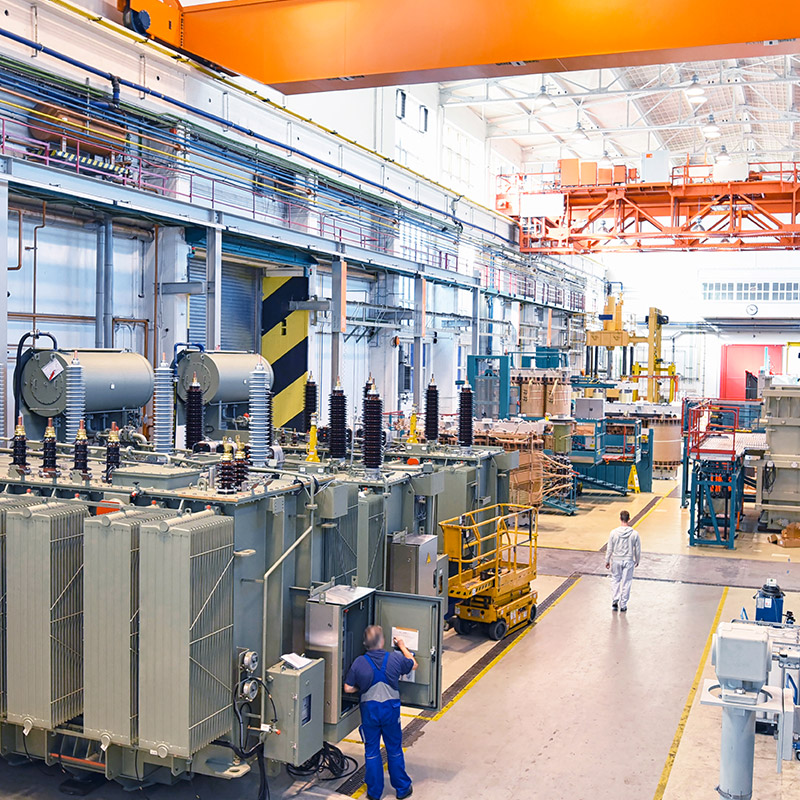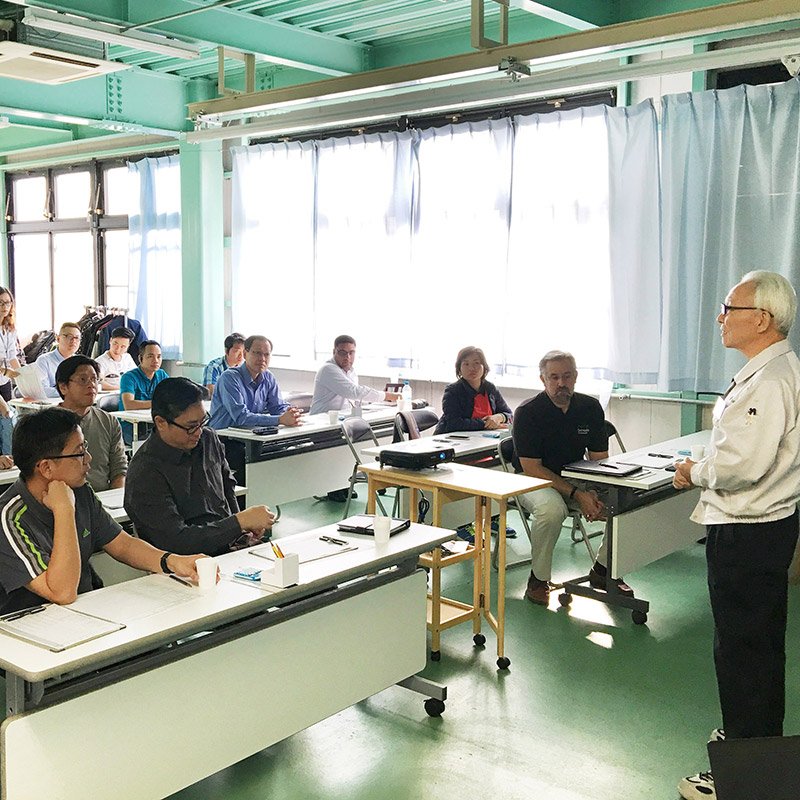In the midst of the COVID-19 pandemic, the expansion of remote work is progressing, but one might wonder if organizations (the entire company) are able to manage or administer efficiently while satisfying ‘quality, quantity, and cost’.
It has started to seem similar to the issues that many small and medium-sized enterprise managers were grappling with even before the pandemic. There are several companies that have been assisted by referencing the Toyota Production System’s approach to management. This time, I will introduce an overview of that.
Are you able to obtain ‘the necessary information’ at ‘the time you want’ with ‘the desired amount of data’?
Even before the COVID-19 pandemic, ‘lack of communication’ was a problem.
When listening to the challenges faced by companies, in many cases, one encounters the issue of ‘lack of communication.’ This refers to the coordination within and between organizations. In other words, it’s also a conversation about the lack of communication when saying ‘our employees are not good at “reporting, communicating, and consulting” (Hou-Ren-Sou in Japanese).
The impact is significant even within a single department, but the lack of communication across the entire company has often been observed to lead to many losses, not just in profits but also affecting safety, credibility, and more. This was the situation before the pandemic, so in the world of remote work during the COVID-19 crisis, it might have become an even more pressing issue.
目次
1.”Pull-Type” Transforms Management
One of the concepts of the Toyota Production System is the ‘pull system’ (represented by the use of kanban, where production is driven by downstream demand). Applying this concept not only to the production floor but also to the world of management can lead to significant results. Considering ‘pull-type management’ brings to light the aforementioned issues with ‘reporting, communicating, and consulting’ (Hou-Ren-Sou). And by practicing it themselves, managers and supervisors can implement a more practical Toyota Production System.
2.The concept of “Pull-Type Management
Have any managers or administrators ever found themselves asking, ‘Why would you report this?’ or ‘Why is this report late?’ Or perhaps on a Monday morning, upon arriving at your desk and opening your computer, you find 100 or 200 emails waiting for you.
I urge you to consider the ‘pull system.’ The subsequent process after reporting and communication is for managers and administrators. With this mindset, you get ‘the necessary information,’ at ‘the time you want,’ in ‘the desired amount of data.’ In Toyota Motor Corporation’s production sites, years of accumulation have made this data always available on the shop floor, a practice known as ‘visualization.’ In other words, managers and administrators should ensure that the information they need is always available not just on the production floor but also in the administrative and technical departments. It’s about setting your own criteria based on your expertise, skills, and extensive experience. It’s crucial to consider items for the company’s sustainable development at the preparatory stage.
3.Advantages of Pull-Type Management
Can the past be changed?” Many reports you receive likely focus on outcomes. Since the past cannot be changed, negative outcomes can result in significant losses once they occur. Conversely, “Can the future be changed?”
If known in advance, it’s possible to change the future. The advantage of pull-type management is that it allows for mid-process adjustments and corrections by tracking information about the progress of work (processes).
You might have heard the saying, “Quality is built into the process.” If it’s mid-process, minor issues can be incorporated into the process, and in case of defects, parts or semi-finished products can be remade. This significantly reduces waste and unnecessary time. This is a logical expression of the concept. It’s possible to create a world of proactive management. If pull-type reporting and communication become possible, subordinates will be able to understand their superiors’ intentions, which should also invigorate “consultation” activities.
Pull-type management is not about pushing from behind (push), but rather about pulling closer (pull).”
4.My Common Sense and the World’s Common Sense
When I assist companies, one thing I pay attention to is to think of “Toyota Group’s common sense as the world’s non-common sense” and to listen to everyone’s opinions. If I assume that my common sense is correct in everyone’s world, it would only result in me pushing my methods onto others, and they wouldn’t truly become yours. It’s all of you who will sustainably develop the company. Together, we think about the means suited to that company, and if necessary, we change your common sense (pull).
For example, in the case of a foundry business, I was once told by a plant manager that “castings are living things, so the defect rate won’t decrease.” As a result, a method was adopted where defects are found and discarded through a three-stage inspection process. Moreover, castings can have internal defects, and often, defects become apparent during the customer’s machining process after delivery.
This could not only result in significant losses due to defect compensation but also risk losing the valuable trust of our customers. By mapping the manufacturing process flow and simply tracking where changes occur, such as temperature, humidity, frequency of machine use, heat of the molds, and flow state, the true cause could be understood, and loss costs significantly reduced.
No investment in equipment was needed for the measures.
With data, things can be thought of simply, and what was once considered a “living thing” turns into a “product.”
It’s likely that supervisors and workers on the ground, caught up in daily responses, may not extend their concerns to such matters. Hence, they quickly resort to thinking of castings as “living things
5.Pull-Type Safety Measures
Safety is of utmost priority for companies. The only target value that must be “achieved zero” in a company is safety. I believe every company conducts KY activities (hazard prediction) to anticipate dangers.
However, the reality is that the number never reaches “zero.” While “prediction” and “forecasting” are important activities, predictions can fail, and it is difficult to prioritize countermeasure items.
There’s something called “YK activities” that complement KY activities. It’s not merely the opposite of KY.
“Y” stands for “difficulty” (YARINIKUI), and “K” stands for “consideration” (KIDUKAI), where workers identify tasks that are difficult or require extra consideration. By prioritizing these with the workers and developing countermeasures, the actual safety conditions can be secured.
This is an example of pull-type management that draws closer and aligns with the workers.
6.Winning Over Customers / Examples of Information Sharing
Sharing part of the management-needed information in real-time with customers has led to increased credibility and profits, and differentiated some from their competitors.
For instance, several companies have shared the progress of individual manufacturing or construction sites by daily sending or displaying on-site Excel sheets that show daily progress with quantitative data and graphs, specific to the customer’s product type. This approach allowed for immediate consideration and response to any changes required by the customer, thereby increasing their trust and flexibility towards our issues. This is an example where information becomes more useful when shared in multiple directions.
There are many other examples where sharing information has produced effective results.
Simplifying the financial situation into easy-to-understand graphs for on-site workers has led to an activation of improvement activities, as workers could see how their efforts contributed to the company.
In uncertain development projects, centralizing the progress not only of the company but also of partner manufacturers and sharing it with all parties involved has led to not only catching up on delays but also significantly reducing development lead times.
To promote such practices, I hope managers and administrators will consider “pull-type management” that encourages “reporting, communicating, and consulting” (Hou-Ren-Sou) among their subordinates.
Finally, something that was very enlightening and a reference for me during my time as an executive was a lecture by Shigetoku Hatakeyama*, who revitalized oyster farming in the Tohoku region.
As oyster farming became popular and the quality and harvest quantity of oysters began to decline, many focused on countermeasures for the farming itself. In contrast, Hatakeyama alone realized that the cause of the sea’s pollution was due to deforestation and began reforestation, leading to the sea’s and oyster farming’s revitalization. Looking at the same data of the sea, deciding where to gather further information, and what actions to take. Learning from the silent oysters and the sea is indeed an example of “pull-type” management.
I encourage everyone to consider the “pull-type” approach. You might hear the voices from the field differently.
*1 Japan Brackish Water Journey” by Shigetoku Hatakeyama (Bungeishunju Ltd.)
この Column Written by a TPS Improvement Consultant

Nobutoshi Nagaya
Former Toyota Motor East Japan, Inc.: Technical Supervisor & Advisor, in charge of PS (Production System) and TQM (Total Quality Management) projects. Former Kanto Auto Works: Executive Managing Director, Deputy Head of Production Technology Division, in charge of overseeing overseas business.
Learned directly the essence of TPS from Mr. Shin Uchikawa, one of the four lieutenants of former Vice President Taiichi Ohno. Handled the introduction of the Toyota Production System to various companies both domestically and internationally.
3 reasons why we are chosen REASON

REASON 1
Improvement experience of
more than 1,500 companies in 40 countries
There must be the shop floor issues that cannot be solved by your own company alone. Improvements and reforms for manufacturing industry to survive, regardless of country or industry, need development of your human resources through practical experiences of improvement, and strengthening of your production system base.

REASON 2
Consulting that shop floor workers
acknowledge our superiority and be pleased
In conventional consulting styles, there was a distance between consultant and the shop floor because it was promoted mainly consultant and management executives. Our consultant can provide a guidance without a distance between consultant and the shop floor through the guidance based on the “seeds of improvement” in a concrete way, instead of “finding fault” like a critic.

REASON 3
Continuous improvement will continue
even after the end of guidance
While strengthening “human resource development”, we focus on the “overall flow” from design to purchasing, manufacturing, logistics, and production control, and provide guidance that matches the actual situation of your company. Continuous improvement will continue even after the end of guidance through the guidance that is acceptable to the shop floor workers.
Consultants from major companies
with experience in over 40 countries will respond.
Please feel free to contact us.
If you are in a hurry, please call us.
(Japan time)
Except for Saturday, Sunday, holidays, Year-End and New-Year holidays

